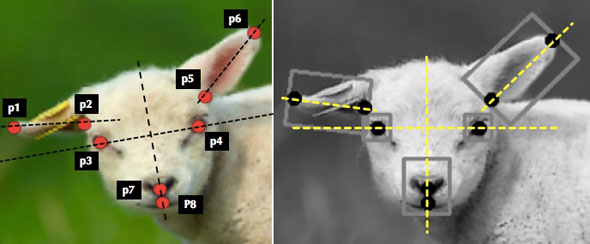On Wednesday, Google announced a host of new, machine-learning enabled tools to help keep Gmail data more secure. In a blog post by Andy Wen, senior product manager for Counter Abuse Technology, the search giant unveiled its new offerings, including early phishing detection, click-time warnings for fraudulent links, and "unintended external reply warnings and built-in defenses against new threats."
According to the post, 50-70% of the emails your Gmail inbox receives are spam. By using a machine learning algorithm, Google can pinpoint and block these messages with more than 99.9% accuracy. With its new early phishing detection, the company "selectively delays messages (less than 0.05 percent of messages on average) to perform rigorous phishing analysis and further protect user data from compromise." Its spam detection integrates with Google Safe Browsing—which spots suspicious-looking URLs. According to Google, the models produce click-time warnings for phishing and malware links—and because they're using machine learning algorithms, the accuracy improves over time.
In order to support employees who want to be proactive in securing their data, another feature Gmail now offers can display unintended external reply warnings in order to prevent data loss. How does it work? If someone tries to email someone outside of the company, that user will receive a warning that asks if that message was intentional. If it's a regular contact from outside the company, Gmail will remember the information, and will stop sending warnings.
Google's new tools also offer protections against millions of messages that threaten users, through its built-in defenses against ransomware and polymorphic malware. According to Wen's post, the company can "classify new threats by combining thousands of spam, malware and ransomware signals with attachment heuristics (emails that could be threats based on signals) and sender signatures (already marked malware)."
This addition to Gmail's security offerings comes on top of several other recent measures, which include (according to the release):
- Hosted S/MIME, to encrypt email while in transit
- Data Loss Prevention for Gmail, to protect your most sensitive information
- Alerts when TLS encryption between mailboxes is not supported or when a message can't be authenticated, so you're aware when you email someone whose mailbox does not support encryption
While Gmail has millions of individual users across the globe, it is also a staple for the enterprise. Companies like CBS, Whirlpool, PWC, and Woolworths are a handful of businesses that use the program for work-related purposes.

Image: ZDNet
The 3 big takeaways for TechRepublic readers
- On Wednesday, Google announced new security features for Gmail to keep emails safer from phishing and threats, enabled by machine learning.
- With its early phishing detection, Gmail can pinpoint and block spam messages with more than 99.9% accuracy—which improves over time.
- The update is the latest Google initiative to make the platform safer for the enterprise. Other efforts include data loss prevention, encrypted email, and other alerts.







